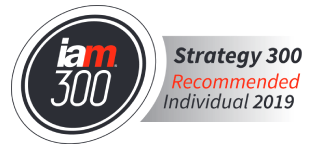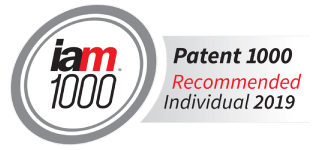Services
Practice Areas
Why SpencePC?
Clients choose SpencePC because we do outstanding work for fair compensation. Unlike our competitors, we encourage the use of alternative-fee agreements that more closely align our clients’ interests with the Firm’s interests. As a result, our clients pay only for the value they receive.
Our Philosophy
Our philosophy is simple: be outstanding and offer a unique value proposition. Hourly billing creates the wrong incentive for attorneys to work longer, not smarter. Instead, we encourage alternative-fee arrangements that reward success and efficiency. By doing so, our attorneys remain focused on obtaining the best results for our clients in the most cost-efficient manner.
Our Skills
We are attorneys who specialize in intellectual property and complex litigation. We hold science, engineering, and law degrees from the nation’s top schools. Following our education, each of us received years of additional training from prestigious, top-tier law firms. Our billing model ensures we remain focused on obtaining the best results in the most cost-efficient manner.
Associations & Accolades
Law360 Publishes SpencePC Associate Brian Beck’s Article on Unpatentable Subject Matter Motions
On November 14, 2017, Law360 published SpencePC Associate Brian Beck’s article, “Winning Section 101 Motions By Defining the Abstract Idea,” to its Appellate and Intellectual Property sections. The article, available at Law360’s website, analyzes recent Federal Circuit cases regarding whether claims are unpatentable abstract ideas, and concludes that district courts’ and the Federal Circuit’s decisions are often strongly determined by how the patent owner and accused infringer respectively define the supposedly abstract idea of the claim. The article also explains why parties seeking to either challenge patents as unpatentable abstract ideas or to defend against claims of unpatentability should seek technologically sophisticated counsel who can understand and accurately characterize the technology at issue.
Winning Section 101 Motions By Defining The Abstract Idea
The critical dispute in most 101 motions post-Alice is how to define the alleged “abstract idea” covered by a patent. Patent owners win when they can convince the judge that the central “idea” behind a patent is sufficiently complex and nonabstract; accused infringers win when they convince the judge the idea of the patent is fully captured by a simple and short description. The latest Federal Circuit 101 decision, Smart Systems Innovations LLC v. Chicago Transit Authority ,[1] once again should guide patent litigators toward focusing their 101 motion practice around the goal of defining the central “idea” of the patent in their clients’ favor. More importantly, Smart Systems should guide both patent plaintiffs and defendants toward choosing counsel who are not only good general litigators, but who can thoroughly understand the patented technology.
Smart Systems concerned patents on electronic payment systems for mass transit. The Federal Circuit identified as representative Claim 14 of U.S. Patent No. 7,566,003 :
- A method for validating entry into a first transit system using a bankcard terminal, the method comprising:
downloading, from a processing system associated with a set of transit systems including the first transit system, a set of bankcard records comprising, for each bankcard record in the set, an identifier of a bankcard previously registered with the processing system, and wherein the set of bankcard records identifies bankcards from a plurality of issuers;
receiving, from a bankcard reader, bankcard data comprising data from a bankcard currently presented by a holder of the bankcard, wherein the bankcard comprises one of a credit card and a debit card;
determining an identifier based on at least part of the bankcard data from the currently presented bankcard;
determining whether the currently presented bankcard is contained in the set of bankcard records;
verifying the currently presented bankcard with a bankcard verification system, if the bankcard was not contained in the set of bankcard records; and
denying access, if the act of verifying the currently presented bankcard with the bankcard verification system results in a determination of an invalid bankcard.
The Federal Circuit determined that this claim, and similar claims from the other asserted patents, were directed to unpatentable abstract ideas. Key to the determination was the panel’s view that the defendants’ characterization of the claimed invention as a simple abstract idea was correct. That the Federal Circuit accepted the defendants’ characterization suggests that the patent owner, both in the district court and on appeal, was unable to prevail because it failed to offer its own definition of what idea exactly the patent was directed to, and instead only challenged the defendant’s characterization of the asserted claims.
In this case, the defendants’ simple characterization of the patent prevailed. The defendants, in their initial motion for judgment on the pleadings characterized the challenged patents in extremely simple terms: “those four patents are directed to the abstract idea of using a bankcard to access mass transit.”[2] The district court adopted that very simple characterization of the patent, and the Federal Circuit approvingly quoted its characterization that, “[s]tripped of the technical jargon that broadly defines non-inventive elements (e.g., the ‘interfaces’ and ‘processing systems’), and further shorn of the typically obtuse syntax of patents, the patents here really only cover an abstract concept: paying for a subway or bus ride with a credit card.”[3]
The plaintiff, in both its opposition brief in the district court and in its appellate brief, failed to offer any positive contrasting description of what exactly its patents covered. In its district court brief, the plaintiff argued that the patents require more than “using a bankcard to access mass transit,” but only did so by referring to the “specific technologies” identified (in fairly generic terms) in the claim such as a “bankcard terminal” that “regulat[es] access,” a “processor,” “memory,” and other fairly generic computer terms.[4] The plaintiff added slightly more detail in its appellate brief, arguing that the claims were “directed to an improved bankcard terminal — which is a concrete assembly — that enabled the use of bankcards directly at the transit gate.”[5] But again, the plaintiff only supported its characterization of the claim by reference to generic terms like “bankcard terminal” in the claims.[6]
The Federal Circuit was not convinced by plaintiff’s argument. The Federal Circuit explicitly rejected any suggestion that the asserted claims were directed to anything more than handling of financial data:
Taken together, the Asserted Claims are directed to the formation of financial transactions in a particular field (i.e., mass transit) and data collection related to such transactions. The Asserted Claims are not directed to a new type of bankcard, turnstile, or database, nor do the claims provide a method for processing data that improves existing technological processes. Rather, the claims are directed to the collection, storage, and recognition of data.[7]
Of course, the plaintiff-appellant cited two of the most plaintiff-friendly recent Federal Circuit decisions on patentable subject matter — Enfish LLC v. Microsoft Corp.[8] and McRO Inc. v. Bandai Namco Games America Inc.[9] — and the Federal Circuit distinguished each of them from Smart Systems. To distinguish Enfish, the court explained that the Enfish patent was a claim “purporting to improve the functioning of the computer itself,” but that Smart Systems “does not argue that its claims are directed to an improvement in computer technology.” To distinguish McRo, the court explained that the Smart Systems patent was “not directed to specific rules that improve a technological process,” because it simply invoked computers.
The Federal Circuit’s distinctions between Enfish and McRo and the Smart Systems patent appear to be heavily influenced by the parties’ characterizations of the patents in these three cases. The claim upheld in Enfish was a pure software claim that, if it improved the functioning of the computer, did so only by specifying an algorithm that was more efficient in some situations. The Federal Circuit acknowledged that the claim in Enfish was purely a software algorithm, explaining that, “[m]uch of the advancement made in computer technology consists of improvements to software that, by their very nature, may not be defined by particular physical features but rather by logical structures and processes.”[10] Then, the court described the claimed invention in Enfish as “a specific type of data structure designed to improve the way a computer stores and retrieves data in memory.”[11] The Smart Systems patent, however, implemented a specific arrangement of technology designed to improve the way a mass transit turnstile admits passengers; why was that arrangement and improvement not patentable?
Similarly, the Smart Systems court’s distinguishing of McRO does not seem correct based on an analysis of the technologies at issue. The claim in McRO was to a method for automating facial expressions of animated characters, with claim limitations requiring, inter alia, “obtaining a first set of rules that define output morph weight set stream as a function of phoneme sequence and time of said phoneme sequence.”[12] The court characterized this claim limitation as “limiting in that they define morph weight sets as a function of the timing of phoneme sub-sequences,” and that this was a specific rule that overcame a Section 101 challenge.[13] But the technical jargon in that claim limitation means little more than “rules to correspond facial expressions to speech!” Notably, the defendant-appellee in McRO made that exact argument on appeal, and the court rejected it because “no record evidence supports this conclusion.”[14]
Thus, the Federal Circuit’s decision in Smart Systems, in comparison to its decisions in Enfish and McRO, indicates that the way a patent owner’s attorney characterizes software or software-adjacent patents may affect the 101 analysis as much as the claim limitations themselves. The plaintiff in Smart Systems did not offer a clear, nonabstract description of its patent claims to counter the defendant’s simple description of “using a bankcard to access mass transit.” The plaintiff in Enfish, in contrast, prevailed by providing its own description of its claim as “a specific table structure that ‘may store any type of data, both structured and unstructured,’ that ‘overcomes the limitations of both the relational database model and object oriented database model by providing a database with increased flexibility, faster search times, and smaller memory requirements and that supports text attributes.’”[15] Similarly, the plaintiff in McRO was able to point to specific claim limitations that appeared to limit invention beyond the abstract concept of “applying rules for synchronizing animated facial expressions to speech,” where the Smart Systems plaintiff did not.
The first lesson of Smart Systems is that an attorney attempting to defend a motion to dismiss based on Section 101 should not emphasize a claim’s combination of generically defined hardware, but should take care to describe the invention in terms of its specific improvements over the prior art. Claim 14 of the ’003 patent could have been described not as merely a method for using a bank card to access transit, but as “a specific improvement in mass transit entry systems that allows speedy entry into a mass transit system with a bank card, rather than a ticket, by pre-registering and pre-loading transit customer bank card data to allow admission without the danger of network delay or failure.” The plaintiff could have focused on how the specific claim limitations achieve an improvement over merely validating a bank card over a network by assigning separate identifiers to pre-registered bank cards, downloading them to the entry terminal, and comparing the bank card identifier to the downloaded file to verify entry locally so there is no network delay. The language in Enfish and McRO suggests that this characterization of claim 14 would have been more likely to survive the district court’s or the Federal Circuit’s scrutiny.
The second lesson of Smart Systems, Enfish and McRO is for in-house counsel seeking to retain litigation counsel; each case emphasizes the need to hire technologically sophisticated litigation counsel who can understand and accurately characterize the technology at issue. In Smart Systems in particular, any Chicagoan riding the L or a CTA bus would understand how frustrating even seconds of delay at a turnstile can be, and how significant the improvement of being able to enter a turnstile with a credit card without waiting for bank verification over the internet would be. With a strong understanding of the technology and problem at issue, an attorney could have focused the court’s attention on that real-world improvement — like the plaintiff-appellant’s attorney did in Enfish — rather than focusing on generic hardware devices used in the implementation. And on the defendant’s side, a technologically sophisticated attorney would have emphasized that apparently specific claim limitations that supposedly improve on the prior art were simply the natural and necessary way to implement the abstract idea of using bank cards to access mass transit — as the defendant-appellee might have done in McRO. Lawyers presenting or defending a 101 challenge must have a thorough understanding of the patented technology to best advocate for their clients.
_________________________________________
The opinions expressed are those of the author(s) and do not necessarily reflect the views of the firm, its clients, or Portfolio Media Inc., or any of its or their respective affiliates. This article is for general information purposes and is not intended to be and should not be taken as legal advice.
[1] No. 2016-1233, Slip Op. (Fed. Cir. Oct. 18, 2017)
[2] Smart Systems Innovations, LLC v. Chicago Transit Authority, No. 14-cv-8053, Defendants’ Memorandum in Support of Their Motion for Judgment on the Pleadings, Dkt. No. 52 at 3 (N.D. Ill. Apr. 8, 2015).
[3] Smart Systems, No. 2016-1233, Slip Op. at 12.
[4] Smart Systems Innovations, LLC v. Chicago Transit Authority, No. 14-cv-8053, Plaintiff’s Brief in Opposition to Defendants’ Motion for Judgment on the Pleadings, Dkt. No. 54 at 8-9 (N.D. Ill. Apr. 24, 2015).
[5] Smart Systems Innovations, LLC v. Chicago Transit Authority, No. 16-1233, Brief for Plaintiff-Appellant, Dkt. No. 18 at 43 (Fed. Cir. Jan. 19, 2016).
[6] See id. at 46-47.
[7] Smart Systems, No. 2016-1233, Slip Op. at 14.
[8] 822 F.3d 1327 (Fed. Cir. 2016).
[9] 837 F.3d 1299 (Fed. Cir. 2016).
[10] 822 F.3d at 1339.
[11] Id.
[12] 837 F.3d at 1307-08.
[13] Id. at 1313.
[14] Id. at 1315.
[15] Enfish, LLC v. Microsoft Corp., No. 2015-1244, Plaintiff-Appellant Enfish, LLC’s Principal Brief, Dkt. No. 35 at 23 (Fed. Cir. July 10, 2015).
The post Law360 Publishes SpencePC Associate Brian Beck’s Article on Unpatentable Subject Matter Motions appeared first on SpencePC.











